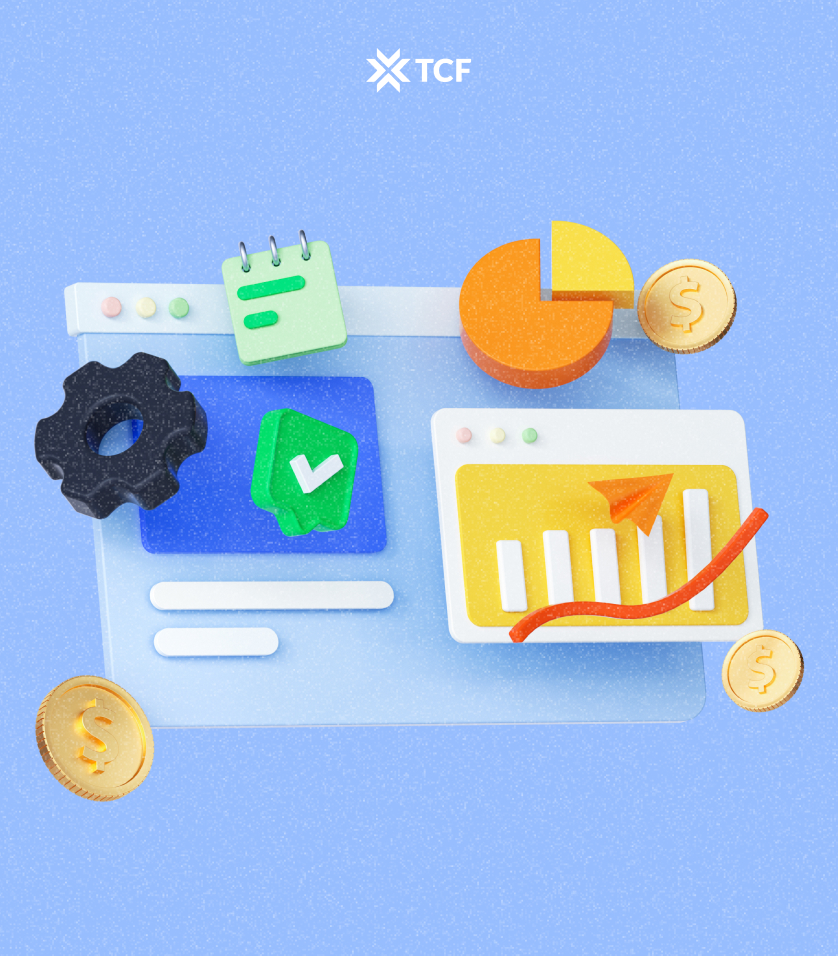Most ecommerce websites look fine on the surface. But what they cost and what that cost actually covers are another story entirely.
If you're building a store, rebuilding one, or trying to justify a website budget to your boss or co-founder, you've probably hit the same wall everyone does: inconsistent estimates, agency fluff, DIY advice that skips the hard parts, and numbers that feel like they were picked out of a hat.
Yes, it depends. But this guide actually breaks down what it depends on (platform, product count, design, tools, monthly burn) and shows you how those choices impact the final price.
You’ll get a full line-by-line breakdown of what it really costs to build and run an ecommerce site in 2025. We’ll also cover what you can do yourself, what’s worth paying for, and how to avoid wasting money on things that won’t move the needle.
Let’s get into the real numbers.
[[cta5]]
What Kind of Store Are You Building?
Not every ecommerce site plays by the same rules. A one-product Shopify store run by a solo founder won’t need the same setup or budget as a multi-category catalog with international fulfillment. Before you start thinking about cost, lock in what kind of store you're actually building.
Here’s how it breaks down.
Small Business / Solo Brand
You’re building your own brand from the ground up. Maybe you’ve got a few SKUs, a vision, and a tight launch timeline. You want a store that looks professional, works reliably, and doesn’t break the bank.
- Your stack: Shopify, WooCommerce, or Squarespace
- Your budget: Likely $500 to $5K upfront, with $50–$200/month in tools and subscriptions
- Your goal: Keep control, spend smart, and launch fast
Dropshipping Operation
You’re not holding inventory. You’re sourcing from suppliers and need a store that looks legit, loads fast, and syncs easily with fulfillment tools. The budget's tight, and ROI needs to come fast.
- Your stack: Shopify (usually with apps like DSers or Spocket)
- Your budget: As low as $100–$500 upfront, with most of your spend going into ads and apps
- Your goal: Test quickly, automate heavily, and reinvest into what works
Enterprise Ecommerce Store
You’re working with big inventory, multiple stakeholders, and serious traffic expectations. You probably have a dev team or agency on speed dial. This probably isn’t your first site and this time, it needs to scale.
- Your stack: Shopify Plus, Adobe Commerce, custom builds
- Your budget: $20K–$100K+ for development, $2K+/month in tools, hosting, and support
- Your goal: Performance, reliability, integrations, and a site that grows with the business
What You’re Really Paying For When You Build an Ecommerce Site
You’re building the heart of your business. A machine that works around the clock, takes orders while you’re at brunch, and casually demands more money than you expected. Domain, hosting, platform, design, features, apps, support: it all adds up.
This section breaks down every moving part so you know exactly where your budget’s going and why your wallet feels personally attacked.
1. Domain and Hosting
This is your store’s home base. Your domain is the address, and hosting is the land it lives on. Together, they make your website visible and usable.
Expect to pay $10 to $20 per year for a standard .com domain. Premium names cost more, but most brands stick with something available and affordable.
Hosting depends on your setup. Ecommerce platforms like Shopify, Wix, and BigCommerce include it in their monthly plans. WooCommerce or custom sites need separate hosting, starting around $5 to $20 per month for shared servers, or $30 to $100+ for managed options with better performance and support.
As your store grows, hosting needs to scale with it. Bigger traffic, bigger product catalogs, more marketing traffic: your server needs to keep up, or your site slows down.
Fast, stable hosting is non-negotiable if you're aiming for actual sales.
2. Platform Fees
This is your core subscription. It covers the software that powers your storefront: product management, checkout, analytics, security, and basic design tools. You can’t run a store without it.
Shopify, Wix, and BigCommerce are all-in-one platforms with monthly pricing. Basic plans start around $29, mid-tier plans land between $79 and $399, and enterprise solutions like Shopify Plus begin at $2,000 per month.
WooCommerce works differently. It’s free to install but runs on WordPress, which means you’re responsible for everything else. You’ll pay for hosting, themes, plugins, and ongoing updates. The platform itself doesn’t charge a fee, but the tools you need to make it work absolutely do.
Platform choice directly affects cost. Hosted platforms offer bundled convenience and faster setup. Self-hosted platforms give you more control, but your time and money go into setup, maintenance, and troubleshooting.
Some platforms charge based on usage. That includes features like storage limits, product count thresholds, or higher fees once you hit a certain sales volume.
3. Design and Theme
This is what makes your store feel like your store. It shapes your brand’s first impression, sets the tone for how people navigate, and signals trust before anyone reads a word of copy.
Free themes exist and can work fine for a lean launch, but they’re often limited in layout, customization, and flexibility. Premium themes typically cost $50 to $300 as a one-time purchase. They offer stronger design systems, better UX patterns, and a cleaner mobile experience right out of the box.
Custom design is a different league. If you're hiring a designer or agency to create a fully branded storefront, expect to spend $2,000 to $10,000 or more depending on complexity. This includes layout design, brand visuals, UI elements, and sometimes light development. That cost increases if you’re working with a team that handles everything end-to-end.
Good design builds trust and removes friction. It doesn’t have to be expensive, but it does have to be intentional.
4. Features and Custom Functionality
Off-the-shelf platforms handle the basics, but every store has unique needs. When your business model calls for something beyond standard templates (custom product builders, tiered B2B pricing, gated content, or advanced bundle logic) you’ll need tailored development.
This work requires specialists. Freelancers and agencies typically charge $75 to $150 per hour, and small projects like custom menus or filter tweaks often start at $1,000. Larger builds, such as multi-language setups or advanced checkout flows, can range from $5,000 to $10,000 or more.
Custom features are an upfront investment that pays off in control and flexibility. They allow you to create a store experience that’s built around your products, your customers, and your goals, rather than working around the limits of pre-built solutions.
5. Apps and Tools
Once the core site is built, apps fill in the gaps and add capabilities. They power marketing, automation, and user experience without needing heavy coding.
Examples include product review platforms, email marketing tools, live chat, popup builders, subscription management, and advanced analytics. Most paid apps cost between $10 and $50 per month. High-end tools like AI-powered personalization, advanced segmentation, or complex inventory sync can run $100 or more.
A typical store launches with 3 to 5 apps and may add more over time, turning this into a $100 to $300 monthly expense. Apps are fast to install and easy to scale, but they can pile up quickly if you don’t track what you’re using.
The right stack of apps makes your store smoother to run and more profitable. Each one should earn its keep by saving time, increasing sales, or improving customer experience.
6. Payment Processing and Transaction Fees
Every sale comes with a cut. No matter which payment options you offer, payment processors charge transaction fees to handle the money side of things: credit card processing, fraud protection, and transferring funds to your bank account.
Standard rates hover around 2.9% + 30¢ per transaction for most platforms and payment gateways. That’s true whether you use Shopify Payments, Stripe, PayPal, or others. Some platforms add their own transaction fees on top unless you use their preferred processor (for example, Shopify charges an extra 0.5% to 2% if you use third-party gateways).
International payments, currency conversions, and chargebacks may come with extra costs. High-volume stores can often negotiate better rates, especially if they process payments through enterprise gateways or offer alternative payment methods like ACH or local wallets.
You don’t pay for this upfront, but it quietly slices into your revenue on every order. Even a small percentage adds up fast as you scale. A store doing $100,000 in annual revenue could see $3,000+ go straight to payment processors.
7. Legal, Accounting, and Compliance
These are the unglamorous parts of launching an ecommerce business but they’re critical. Skipping them can lead to fines, frozen funds, or worse.
At minimum, you’ll need to:
- Register your business (costs vary by country/state)
- Draft Terms & Conditions and a Privacy Policy
- Comply with consumer protection laws and data regulations (like GDPR or CCPA)
- Set up basic accounting or bookkeeping
- Handle taxes (sales tax, VAT, international duties if you ship globally)
You can DIY most of this with templates and accounting software. Expect to spend around $300 to $800 upfront if you’re using paid templates or hiring someone to set things up. Ongoing costs depend on your setup. Some founders handle everything with QuickBooks, others hire a bookkeeper or accountant for $100 to $300 per month.
This category won’t affect your storefront design, but it absolutely affects your ability to operate, scale, and stay out of legal trouble. Budget for it early, not when problems start.
8. Ongoing Maintenance and Support
Your store isn’t done when it launches. It needs updates, patches, and periodic tune-ups to keep things running smoothly.
This includes:
- Software and plugin updates
- Bug fixes and troubleshooting
- Performance monitoring and page speed improvements
- Theme updates or tweaks after platform changes
- Ongoing dev support for any custom features
- Security audits or backups (especially for self-hosted sites)
If you’re using a hosted platform like Shopify, most technical maintenance is handled for you. But if you’re on WooCommerce or running custom builds, expect more hands-on upkeep.
Maintenance can be DIY with time and some technical knowledge, or you can retain a developer or agency. Most monthly support retainers start around $200 to $500 depending on scope.
It’s not flashy, but maintenance keeps your store fast, functional, and secure, especially as your traffic and complexity grow.
9. Hidden Costs That Sneak Up on You
Not every expense shows up in a clean invoice. Some costs hide in growth, mistakes, or overlooked details.
Here’s what tends to catch store owners off guard:
- Rebuilds and replatforming: Many stores start cheap and end up paying more later to fix shortcuts. That $29 theme might need replacing. That $9 app might turn into a $200 dev project once it breaks something. If you outgrow your platform or need to migrate, expect extra dev work and SEO cleanup.
- Training and onboarding: If you have a team, they’ll need to learn how to use your tools. Some platforms are intuitive. Others require full SOPs, training videos, or calls with freelancers.
- Unexpected integrations: Want to connect your store with your warehouse, CRM, or email platform? Some integrations cost extra, need custom dev work, or require middleware tools like Zapier or Make.
- Currency conversion and international sales: Selling globally comes with added layers. Payment gateways may charge conversion fees. You might need translation, local tax tools, or shipping calculators tailored by region.
None of these line items show up in your basic pricing page but they matter. Budget a buffer. It’s the difference between launching and launching without headaches.
Budget Smarter: Tips for 2025 Planning
A good ecommerce budget sets priorities, shapes how your store gets built, and forces you to think about trade-offs before they become problems. Skip the guesswork and plan for what it actually takes to launch and grow in 2025. Here's how to do it right.
1. Align Spend With Lifetime Value, Not Launch Hype
The first month doesn’t pay for the site. Build around what a customer is worth long-term. If your AOV is $60 and LTV is $180, you can justify better UX, faster pages, and premium integrations that improve retention. Overspending early kills ROI, but underspending stalls growth.
2. Build in Stages, But Define Those Stages Upfront
Don’t “add it later” without a plan. Break your build into functional phases (MVP, post-launch iteration, optimization) and map deliverables, tooling, and costs to each one. That way, you’re not duct-taping features later or redoing architecture because someone added subscriptions two months in.
3. DIY or Outsource Based on Time, Skill, and Risk
Every task comes with hidden costs: your time, the risk of messing it up, or the opportunity cost of not doing higher-leverage work. Run each decision through that lens.
DIY the things that scale your knowledge (product copy, offer testing, basic theme edits). Outsource the ones that wreck performance when done wrong: site speed, analytics setup, dev work, tax compliance, or accessibility fixes.
No shame in using experts. But make sure their scope and KPIs tie to measurable outcomes, not vague deliverables.
4. Don’t Forget the Marketing Budget
A beautiful site doesn’t sell on its own. Your marketing budget needs to cover the channels that drive traffic and conversions: ads, email, influencers, and retention tools.
For small brands, that might be $500 to $1,500/month. For funded or scaling stores, $5K+ isn’t unusual. The key is to budget for visibility, not just visuals.
Spending everything on building your ecommerce store and leaving nothing for growth is how good stores get ignored.
5. Map Out Fixed vs. Variable Costs Early
Your SaaS stack, plugins, support retainers, and infrastructure fees all pile up over time. Create two cost models: one based on fixed monthly ops, and one based on scale (more orders, more traffic, more SKUs). Plan for usage-based creep: apps with tiered fees, payment processors with blended rates, or cloud hosting that spikes on promo days.
6. Budget a “Fire Drill” Fund
Set aside 10% to 15% of your total build budget for “oh no” moments. Leave room for actual chaos: a server going down, checkout breaking the night before launch, an integration glitching your load speed, or a developer disappearing mid-sprint. A buffer keeps the launch on track when everything else goes sideways.
So How Much Does an Ecommerce Website Cost, Really?
We’ve broken down every variable that affects your ecommerce website costs and made this calculator to bring them all together to give you a clear monthly estimate based on your choices.
Conclusion
By now, you’ve seen what most pricing guides skip.
We broke down store types, from solo brands to enterprise builds, and unpacked every cost that goes into launching a site. We covered transaction fees, hidden costs, and the real impact of shortcuts that lead to rebuilds later.
You also got a smarter way to plan your budget. Think LTV over launch hype, build in phases, outsource with intent, and prep for variable costs and fire drills before they blow up your roadmap.
And to bring it all together, you’ve got a calculator that turns this breakdown into a real monthly estimate based on your setup.
The goal is to spend where it moves the needle. Build what fits your business, and budget like growth depends on it because it literally does.
[[cta5]]






.png)


.png)




